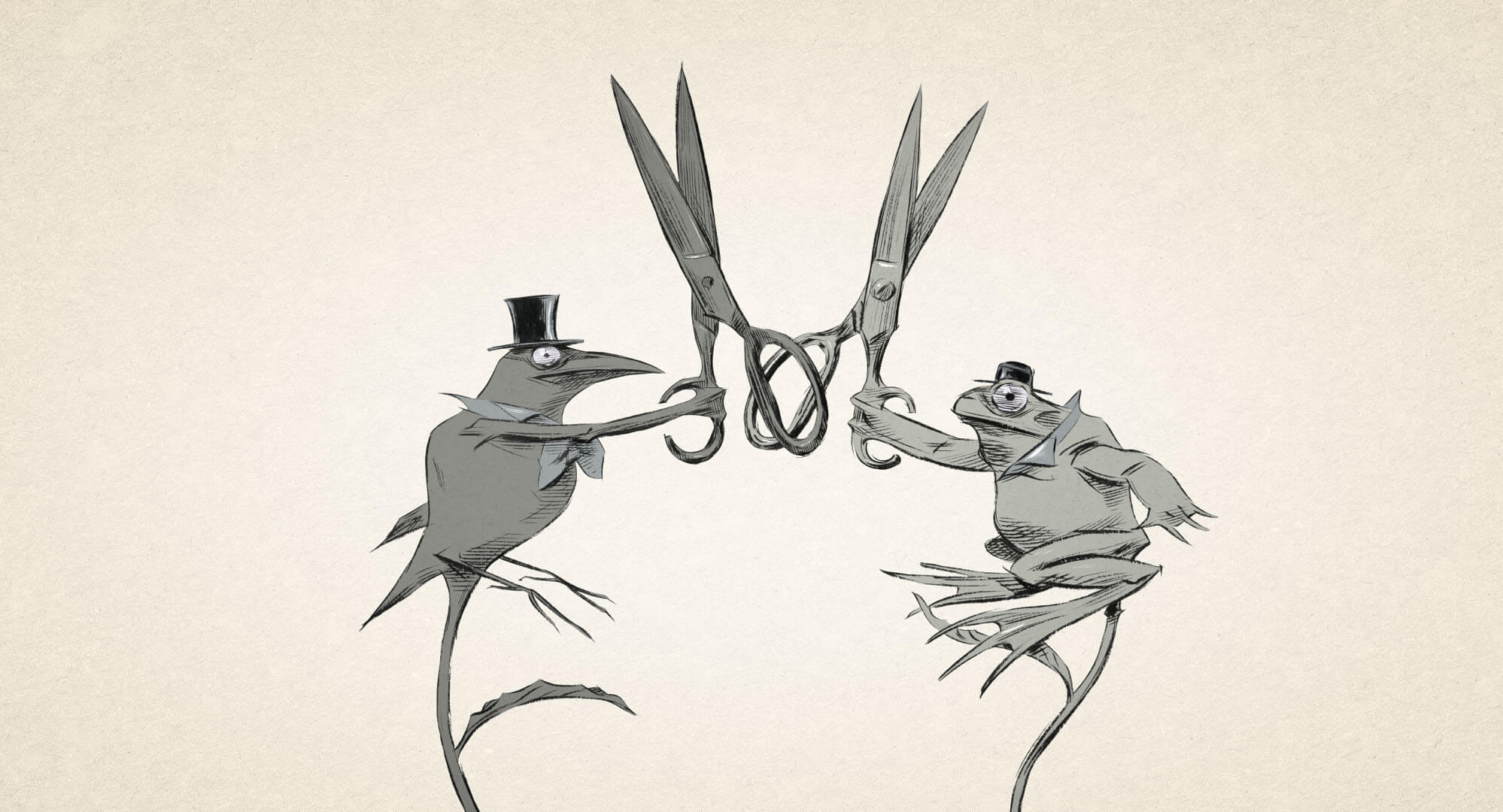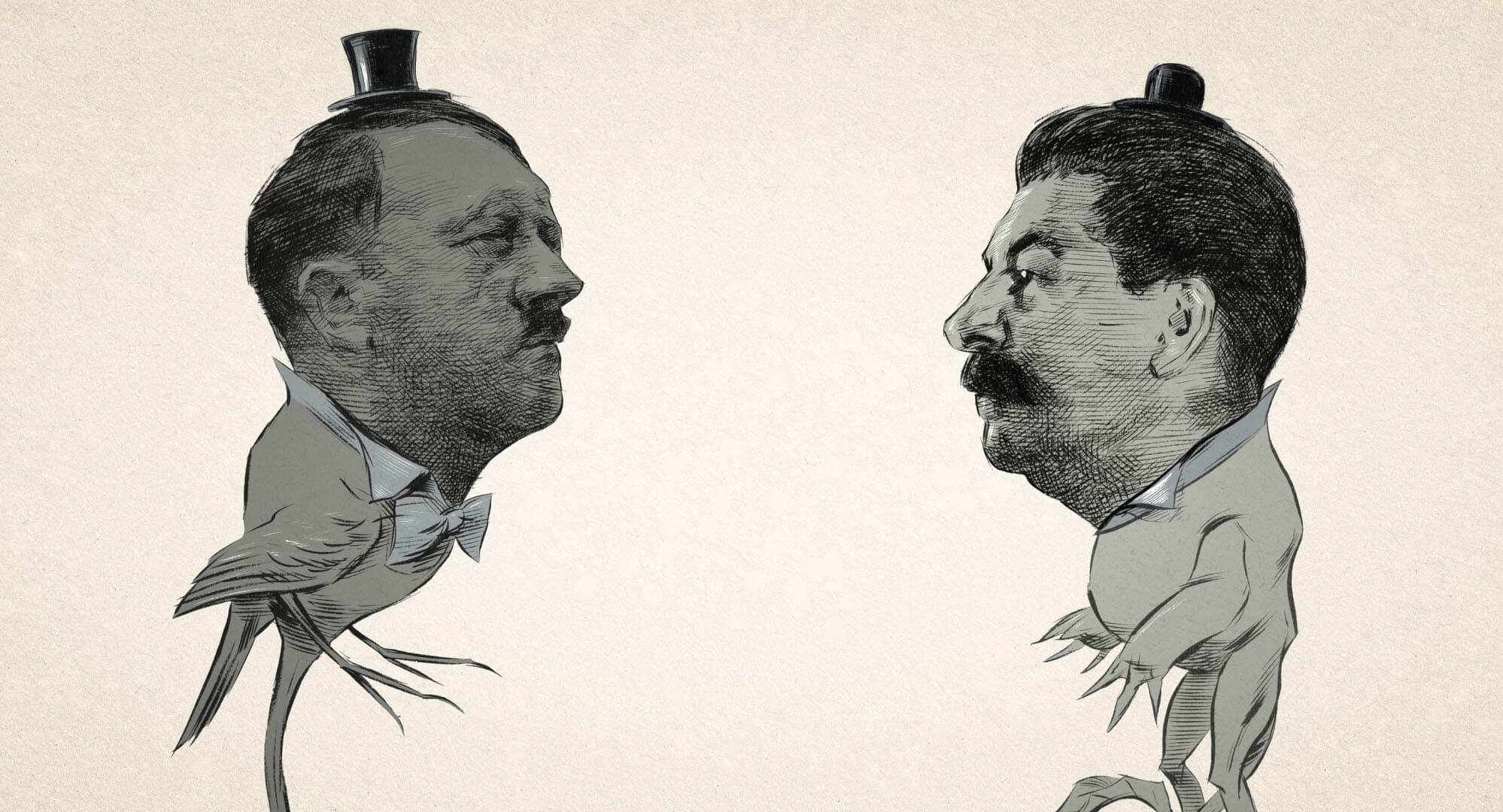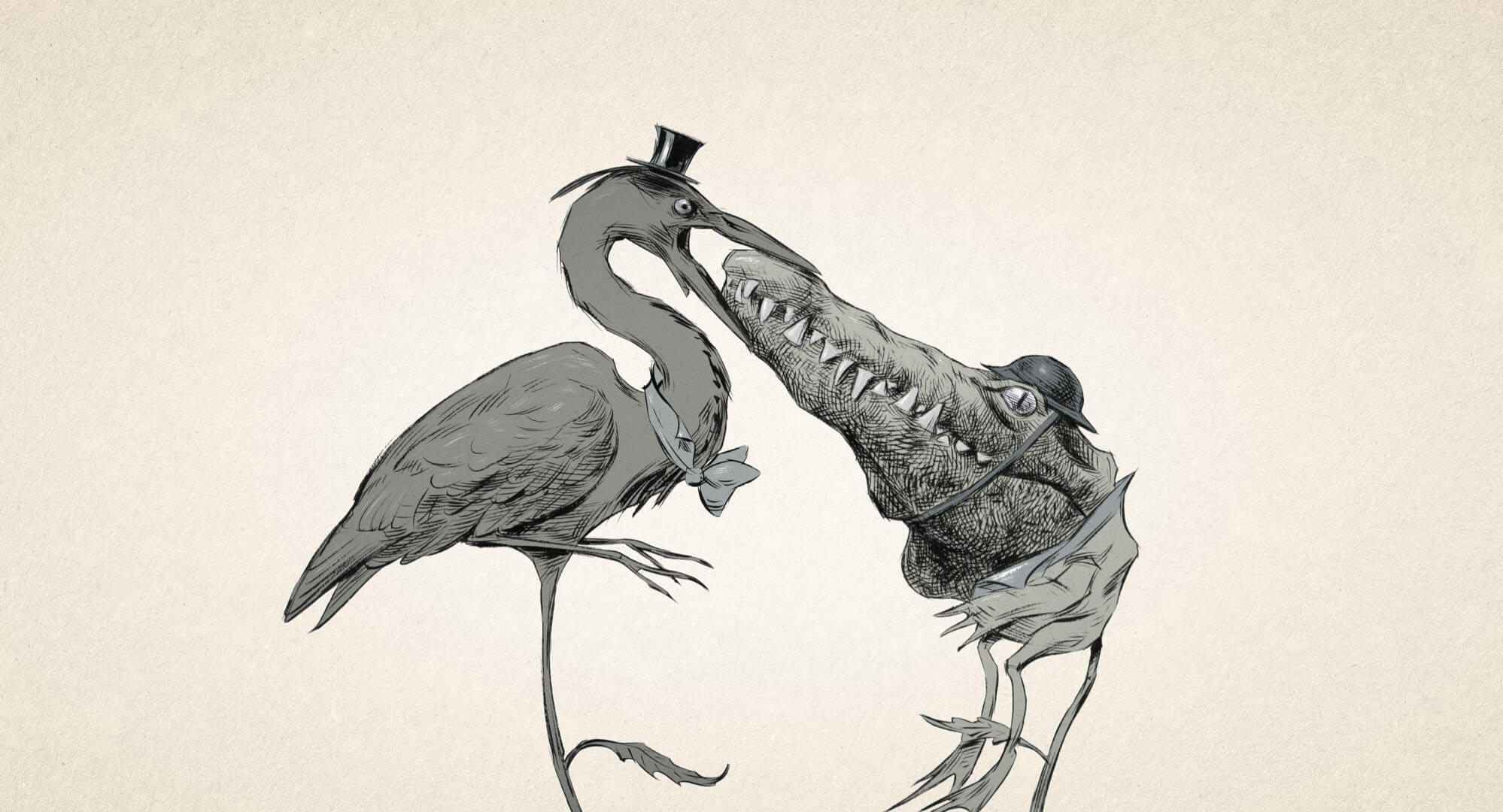Q&A with Claude Cloutier (Bad Seeds)
Taking place in a surreal world where warring, carnivorous plants constantly adapt and morph in a bid for supremacy, veteran filmmaker and graphic novelist Claude Cloutier’s latest animated short Bad Seeds (Mauvaises herbes) showcases the director’s gift for modern fables that marry incredibly-rendered visual concepts with thoughtful satirical observations as previously seen in works such as Carface, From the Big Bang to Tuesday Morning and Sleeping Betty. The film, a co-production between L’Unité centrale and the National Film Board of Canada, draws upon Western film tropes and cultural events such as the Cold War, evoking not just our current sociopolitical climate but the futility of mankind’s antagonism toward itself. Following an Audience Award win at the most recent edition of Les sommets du cinéma d’animation, the film is having a busy month with its inclusion as part of the Annecy International Animation Film Festival 2021 official selection as well as screenings at REGARD – Festival international du court métrage au Saguenay and Palm Springs International ShortFest. Skwigly were enthusiastic to catch up with Claude to learn more about Bad Seed‘s process and origins.
Firstly, congratulations on the film and its initial success out of the gate. I remember seeing a glimpse of it at my last visit to the NFB and am hugely impressed by how it turned out. Roughly how long did this film take to produce overall?
Thank you, Ben. I remember your visit too—it seems like a lifetime ago. Production on the film took about three and a half years.
At its heart the film really shows how simultaneously evergreen and futile our appetite for competition can be, as well as being an inherent part of our nature; was making this film when you did prompted by anything in particular in terms of world events or is it a fable you’ve had in mind for a while?
I like your summary of my film. That’s the perspective I was hoping to elicit. The subject isn’t tied to any particular event. I’m interested in more general themes, like human “nature.” But I also really like the fable or fairy tale as a form. It’s the kind of condensed story that lends itself well to animation.
The metaphors of the film are carried across sublimely by some truly wonderful draughtsmanship. What sort of visual research was involved in creating the look of the world?
As an illustrator, I like exploring different styles and techniques, but I’m particularly fond of line art, and especially drawings in which volume is portrayed through crosshatching. This style is reminiscent of aqua fortis engraving, or pen-and-ink drawings in books or 19th- century newspapers. Gustave Doré and John Tenniel, the most famous illustrator of Alice’s Adventures in Wonderland, are major influences on my work. I decided on this type of drawing for Bad Seeds because it evokes the first printed editions of fables and classic fairy tales. My challenge with this film was to bring together the complexity of engraving-style drawings—which, by definition, are static—with the movement animation allows.

Bad Seeds (L’Unité centrale/NFB)
It would be very easy for the main themes of the film, rooted as they are in conflict, to be carried across in a sombre way, but Bad Seeds is full of levity and absurdism and a curious kind of slapstick joy. Is it important for you as a storyteller to infuse these loftier issues with comedy?
I don’t know if I’d put it that way, but humour is important to me in my personal life. I watch a lot of funny shows and films, and read humorous literature… I consider it a gift when someone makes me laugh, and I try to offer that gift to others as well through my work.
I recall that earlier in the production of the film you were situated in the NFB’s old offices. With the last few years being a period of transition with the studio’s move to downtown Montreal, coupled with the pandemic situation as a whole, did this create any challenges as far as completing the film was concerned?
I rented a studio for the last few months of production, while the NFB was in the process of moving downtown. I was fortunate in that I finished the animation just before the pandemic. It was more the launch of the film that was affected.
The final look of the film is extremely clean and slick although I gather it was all animated on paper. Were there digital processes (colouring perhaps, or cleanup) brought in later on to achieve this look or was it analogue from start to finish?
The film consists entirely of drawings made with India ink and brushes. These were then digitized and coloured by computer. I put a lot of effort into the conception of these drawings and I hope their handmade nature is palpable, despite having to transition to digital for post- production.

Bad Seeds (L’Unité centrale/NFB)
Once we emerge from the establishing shot and get to the action of the piece, the colour palette becomes very subdued and desaturated for the most part. What if anything informed that as a style decision, and does it represent anything as regards the overall themes of the film?
I opted for a minimalist approach in Bad Seeds. My challenge was to tell a story using as few elements as possible: a minimal number of characters, few colours, no backgrounds… all with the goal of focusing attention on the action and the drawing.
Alongside the surreal absurdism to the visuals, in terms of comedic timing it feels very much rooted in the oldest traditions of silent film. Were there any particular performers/directors or eras of film you drew from as an influence?
The analogy between animation with no dialogue and the silent film era is a good one. I’m a big fan of Buster Keaton and Charlie Chaplin, and they have some influence on my work. I also love the work of more contemporary filmmakers like Chuck Jones, Bill Plympton, Richard Condie and Cordell Barker.
I really enjoyed the musical backdrop, in particular the instances of meticulously timed orchestration that felt a bit reminiscent of Carl Stalling and other composers of that era. Can you describe your working process with your composer to achieve this interplay of music and visuals?
Because of the title, Bad Seeds, I naturally gravitated to bluegrass or country music from the start. Sound designer Olivier Calvert and I agreed to try a wide range of musical genres and instrumentation. A piece by Bach played on violin and banjo turned out to be the most apt choice, in keeping with the “cartoon-engraving” anachronistic approach of my film.

Bad Seeds (L’Unité centrale/NFB)
The final shot in particular is enormously impactful, both as a punchline but a dark reminder of an inevitable outcome continuing conflict will bring about. Was that image always in your mind or did it come along as you were working on the production?
For me, the starting point for a new project is a specific image that comes out of very loose test drawings I do in parallel with my work as an animator. It’s a kind of automatic brainstorming. Bad Seeds emerged from a sketch I did of an animal at the top of a plant stalk. It was very early in the process that the final image from the film came to me, and it guided the writing.
The film is already off to a strong start with its inclusion at Annecy and other major events. What do you hope audiences will take from it most of all?
I tried to refine the animation and timing in this film. I tried hard to make a drawing style that doesn’t naturally lend itself to animation appear fluid. I hope the audience appreciates that.
Bad Seeds plays this week as part of the Annecy festival’s Short Films in Competition 2, screening at 10:30am June 15th, 3pm June 15th, 8:30am June 16th, 8pm June 18th and 10:30am June 19th.
The National Film Board of Canada: Driven by Characters will take place 6:30pm June 15th (all times UTC+1)


